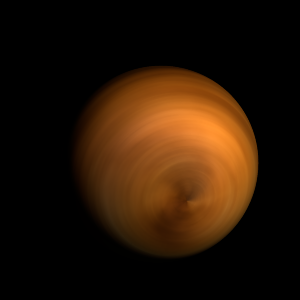|
|
Space Astro
|
Info for exoplanet "Mirmos Lade"
| Scientific (actual) data |
|---|
| Planet | 2M0355 |
| Planet status | Confirmed |
| Planet mass | 28 |
| Radius | 1.22 |
| Discovered | 2008 |
| Updated | 2022-09-22 |
| Temperature (kelvin) | 1527 |
| Log g | 4.66 |
| Publication | Published in a refereed paper |
| Detection type | Imaging |
| Mass detection type | Spectrum |
| Radius detection type | Flux |
| Alternate names | 2MASS J03552337+1133437, 2MASS J0355+1133 |
| Molecules | CO |
| Right ascension | 58.85° |
| Declination | 11.56° |
| Star distance | 9.1203 |
| Wikipedia article | 2M0355 |
Back
| |
| Fictional info (?) |
|---|
| Suggested name | Mirmos Lade |
| Planet type | Huge cold gas giant |
| When viewed from Chothee-raxmir, Mirmos Lade can reach an apparent magnitude of -3, bright enough for its reflected light to cast shadows, and making it on average the third-brightest object in the night sky. It is named after the deity Mirmos Lade, the goddess of good fortune.
Mirmos Lade's axis has the smallest tilt of any of its solar system's planets.
The smooth Borealis basin in the northern hemisphere covers 21 percent of the planet and may be a giant impact feature.
The Mirmos Lade system has a unique configuration among those of the planets because its axis of rotation is tilted sideways, nearly into the plane of its solar orbit.
This scary place is full of aggressive advanced plants that feed at the sea by finding nourishment in the somewhat smaller "Viste". The Isopid Tan are closely similar to the Munchal but have wings and vary in size from 80 to 170 mm. Isopid Tan are known to live at temperatures from 10 to 70°C and to some degree drought. |
| Estimated population | 0.7 |
| Atmosphere | CO | 99% |
| Atmospheric pressure | 24 bar |
 |
| No known satellites |
| Google search for Mirmos lade |
|
Website by Joachim Michaelis
|
|
|
|